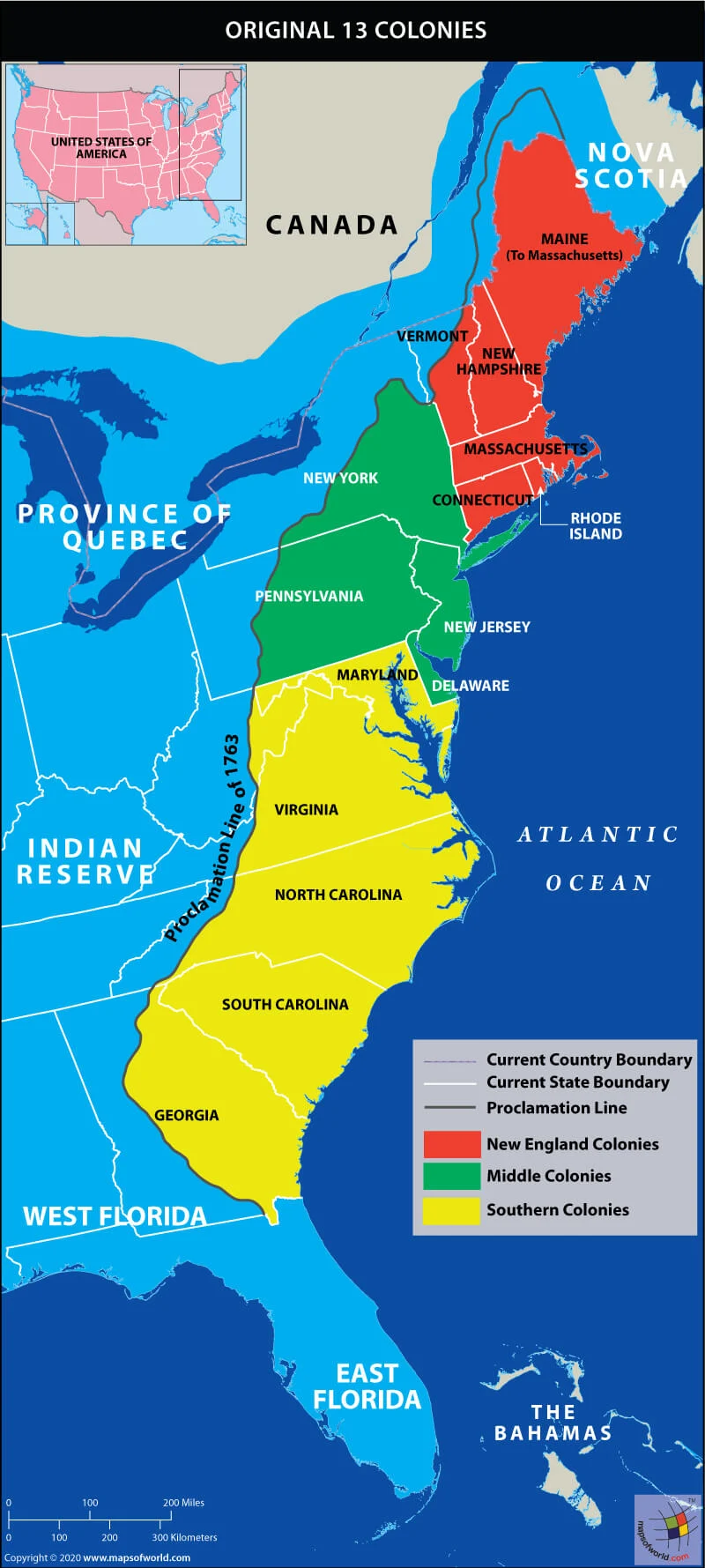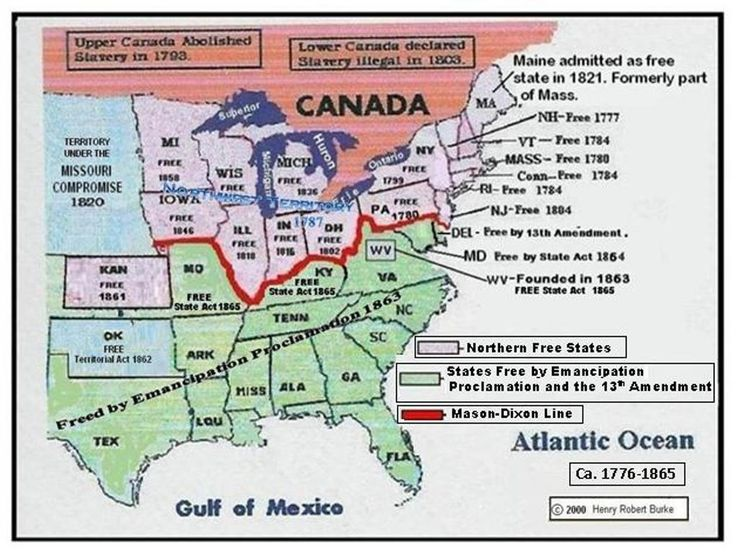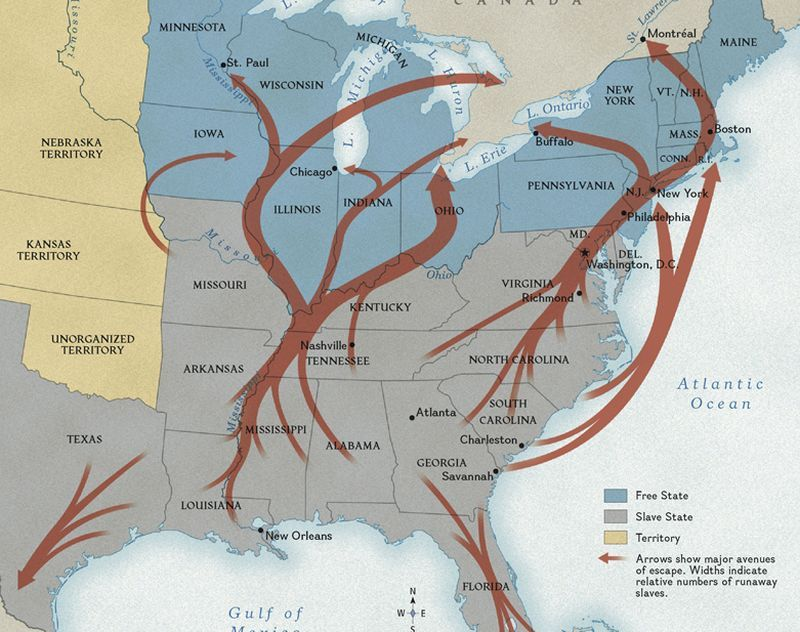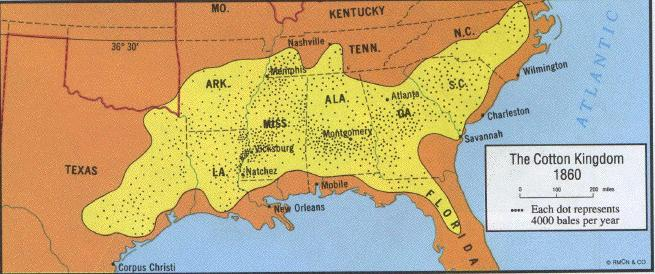slaves were present in many cultures, not just in America. However, American Slavery was unique in that it had a racial/ethnic element.
Slavery Introduction
- Slavery has been in existence since the beginning of man’s recorded history, with reference found in the Bible.
- The most recent version of slavery was from imperialist expansion of empires of Spain, Portugal and Britain.
- It would be the Englishman, John Hawkins, who first started the slave trade in England in 1542.
- African slaves came largely from West African Countries of Guinea, Liberia, Ghana, C’ote d’Ivoire, Sierra Leone, Nigeria, and the Congo.
- The most famous departure point was Lomboko in Sierra Leone
- It is estimated that over 12 million slaves were taken from Africa
Transatlantic Slave Trade
- The captured slaves were shipped across the Atlantic, called the Middle Passage, to the West Indies where they were used in the sugar cane industry. In the United States, slaves were used in the cotton industry.
- During the 13th colonies era, slavery was present throughout the 13 colonies. However, slaves had slightly more rights compared to their 1800s counterparts and were able to negotiate their freedom or be paid. By the 1800s, there were free blacks in the North.
- African had an abundance of resources such as diamonds and precious ores. And Europeans started arriving in Africa. Europeans were able to trade weapons and good to certain kingdoms in Africa in exchange for captured prisoners as slaves.
- ”Seasoned”: (for an enslaved)to acclimatize to American climate in order to be sold off.
- Conditions in slavery were incredibly inhumane
- The first slaves arrived in Jamestown, Virginia in 1619.
- Because of the cruelty of slavery, Great Britain finally outlawed slave trade by 1808, followed by Portugal and Spain.
- The USA banned the importation of slaves in 1808, but there was already around 4 million slaves in the USA.
- The World Anti-Slavery Society by 1834 obtained its goal with the abolition of slavery in the British Empire.
- The only place left where slavery was legal was in the USA.
term The Peculiar Institution#historyhl/term
- A euphemism to describe institutionalized slavery in the American South.
- Coined by Kenneth M. Stampp in the book of the same name in 1956
Slave Ships
Question
how do we know what we know when the perspective of the transatlantic slave trade was written from the perspective of the enslavers?
- Written perspectives were often from the view of crew or slavers, so investigating artifacts of slavery is important to understanding the transatlantic slave trade.
Enslaved: CBC video
- Slavery was not unique to America
Black History in Two Minutes
- 1525-1866, 15% died in transit(around 2 million people)
- Around 450,000 arrived in the United States of America
- 1808: US Ban of Transatlantic Slave Import in America(smuggling occurred afterwards up until the civil war)
Henry Louis Gates Jr.
- Professor and#historyhl/historian
History Channel Video
- enslaved were shaved and stripped before boarding
- the ships were designed to prevent slave mutiny
- enslaved were forced to exercise
- women usually coordinated mutiny due to being more free than adult men.
Zong, a ship thrown 130 enslaved overboard due to disease and increasing financial cost. Court ruled in favour but decision caused outcry among abolitionists.
Chattel
A term for enslaved that dehumanized them
The 13 Colonies

New England
Inhabitants were initially mostly Puritans. Most of initial American trade and industry was developed in New England.
Southern Colonies
More dependent on agriculture due to suitable climate and therefore more dependent on slave labour to harvest crops.
The Peculiar Institution
Slavery pre-1800
1776, slavery existed in all thirteen colonies. Slavery had major importance in the South because Northern climate was not suited for plantation agriculture.
- Cotton, rice, indigo, tobacco, and sugarcane were grown on large Southern estates
- ”Cash Crops”#historyhl/term
Definition
Social Darwinism: application of Charles Darwin’s theory to racial and social theory.
Low country: North & South Carolina
Mason-Dixon Line: Line between Pennsylvania & Maryland; Rough separation between the Northern & Southern United States(North & South)
Southern Agricultural Products:
- Cotton (interior areas)
- Tobacco
- Sugarcane
- Rice
”King Cotton”
- In 1793, Eli Whitney invented the cotton engine(cotton gin). It made the harvesting of cotton easier.
Definition: Deep South & Cotton Belt
Deep South: Louisiana, Mississippi, Alabama, and parts of Georgia.#historyhl/term
Cotton Belt: Areas of the Deep South were cotton were widely cultivated.#historyhl/term
- Many Planters had multiple plantations and usually did not live on their own plantations.
- The cotton gin increased the demand for slave labour to process cotton.
Importance of Cotton
"Cotton is King"
”Cotton is King”… no power on earth dares to make war on cotton. (Senator James Hammond 1858)
- There was an intersection between plantation owners and Southern politicians, which caused a great conflict of interest.
- Everyone in the United States indirectly benefited from cotton except for slaves.
- 1793, Eli Whitney’s cotton engine(gin) enabled short-fibre cotton to be quickly separated from its seed.
- In 1790, USA produced 9000 bales of cotton.
- 1830s, South was producing 2 millions bales per year.
Cottonpunk 1857
- The use of the cotton gin caused an increase in demand for slaves to pick cotton and increased sales of Slave Labour from the Northern South to the Deep South (second middle passage)
- Growth of wealth in plantation owners (a minority of Southerns) incentivized the protection of the institution of slavery.
From 1815-1860, cotton represented over 50% of all American exports. The cotton belt spread westward to the states: Kentucky, Tennessee, Alabama, Mississippi, Arkansas, and Texsus(amogus).
Note
Cotton only grows well in dry continental climates. In the United States, the States of Mississippi, Alabama, Tennessee, and parts of Texas and Arkansas, had the ideal climate.
Cotton Belt#historyhl/term: This area of the south were cotton was widely cultivated.
- Unskilled slave labour was ideal to produce cotton
- Southerners moved westward and brought slaves with them or purchased more slaves. 50 years prior to the outbreak of the Civil War(1810s), over 1 million slaves were estimated to be have been relocated to the South.
Overseers were often failed or aspiring plantation owners. The overseers often used physical and sexual violence to control slaves.
Drivers were picked by overseers to enforce work in slaves. They often punished or whipped slaves to enforce work.
- Gang labour become defining feature of cotton plantation system. Slaves were organized into groups based on physical abilities.
- Overseer supervised the group(usually white)
- Driver prepared to punish workers if they fell behind pace(usually black)
Slavery hampered the growth of the middle class from the Southern United States
Peculiar Institution
Peculiar was special to and characteristic of the South.
Term first emerged in the North prior to 1860 to describe the Southern way of life.
- Modern terms used by historian John S. Kendall in 1940 in his article “New Orleans, Peculiar Institution”
- 1956, Kenneth M. Stampp wrote a book, The Peculiar Institution, that dealt with economics of slavery.
Quote
”Drivers are, under the overseer, to maintain discipline and order on the place…”
Kenneth M. Stampp, The Peculiar Institution
Conditions of enslavement
#historyhl/slavery_in_america
Historians debate nature of peculiar institution
- Sources include plantations records, census returns, newspapers, diaries, travellers’ accounts, and political speeches from the slave owner point of view.
- Limited evidence from slaves because they were illiterate.
- Fugitive slaves who later because abolitionists provided accounts but they were not the typical slaves.
- 1930s interviews flawed because they came from child viewpoint of slavery, and potential faulty memories
Credible Sources:
- My Folks Don’t Want Me To Talk About Slavery
- Slave Narratives from the Federal Writers’ Project, 1936-1938 Missouri
**The issues with these sources were that they were too late. Most slave interviewed in the 1930s were children at the time of slavery and were already senior citizen (80+)
- Slavery was a system that changed, it was not the same in 1850s as in the 1810s.
- Slavery varied from place to place depending on nature of local economy.
- Slave’s experience depended much on the slaveholder.
- Generalizations are difficult to make and exceptions can always be found.
- Slavery was a system of many systems.
Statistical Evidence: 1850 and 1860 Census
- 1850, 3.2 million slaves (6.2 million whites) in fifteen Southern states. 1860, nearly 4 million slaves compared to 8 million whites.
- Slaves concentrated mainly in the lower South. Slaves outnumbered whites in South Carolina.
- 1850, 1 in 3 white Southern families owned slaves. 1860, 1 in 4 white Southern families owned slaves.
- 1860, 88% of slaveholders owned less than 20 slaves and 50% owned no more than 5 slaves. 50% of slaves lived in plantations with over 20 slaves.
Its extremely biased, its not true, but its a great piece of evidence.
- About 10,000 families held most slaves; 3000 families had over 100 slaves
- 55% of slaves worked in cotton production; 10% in tobacco; 10% in sugar, rice and hemp; 15% were domestic servants
| Environment | Percentage |
|---|---|
| Cotton Production | 55% |
| Tabacco | 10% |
| Sugar, Rice, and Hemp | 10% |
| Domestic Servants | 15% |
- 1860, roughly 10% slaves lived in towns or industries
- Slaves were sometimes hired out to other employers for parts of the years.
Southerners Defend Slavery
- Southern States asserted that the Peculiar Institution indeed had advantages. Notions of advantages stem from economic benefit and Southern “altruism” to civilize black slaves.
- Slavery provided a “control system” with 5 million whites controlling 4 million blacks.
- Slavery “protected” blacks from unemployment, care in case of sickness, security in old age, and gave slaves a place to live.
- Slavery freed the South from strikes and labour disruptions which were common in the North
- Slavery allowed some slaves to be Christianized hence “civilized” into white society
Disadvantages of Slavery
- Slavery impoverished the South and its people. Slavery kept the South economically backward, and a highly polarized society. There was an extremely large gap between the rich and the poor. 1860, under 20% of all factories in America were found south of Mason-Dixon Line.
- Slaves and their families were split up when family members were sold down the river. This destroyed the family unit and slowed the development of African Americans.
- Masters treated blacks as property(chattel) and not as human beings. This proved to be a dehumanizing experience for both the slaves and the masters.
- Slavery was oppressive. The system slowed the development of black identity and development in America.
- Slavery maintained racism in America based on theories of Social Darwinism. As a result, the country today is still effected by its slave history.
Social Darwinism
- Social Darwinism became prominent in the late 19
century to give evidence to Euro-centric understanding of people and societies - Applied biological concepts of natural selection and survival of the fittest to human society.
- Herbert Spencer (1820-1903) -Principles of Biology (1864)
Mason-Dixon Line

Abolitionists
- Abolitionist wanted to abolish slavery
- Since early 1800s, some abolitionist wanted to free slaves in America, others wanted for slaves to be resettled in Africa.
| Immediate | Gradualist |
|---|---|
| - “Immediate abolish, gradually accomplish” - Wanted slavery to be abolished immediately - Famous abolitionist was William Lloyd Garrison | - Gradually abolish slavery, state by state, with compensation of owners for their slaves - Lincoln was a “Gradualist” wanting to abolish slavery but fearful that if done immediately, the results could bring economic recession of Black retaliation against Whites |
1833, American Anti-Slave Society was created
- Garrison, Lewis, Arthur Tappan(New York), Theodore Dwight Weld(Ohio) prominent voices
- Sarah and Angelina Grimke, South Carolina slaveholding family
- 1838, AAS had 250,000 members
- Paid AAS agents traveled across the North to lecture, distribute anti-slavery literature, assisted free blacks and fugitive slaves
- Organized frequent and massive petitions to Congress but in 1836 Congress introduced a “gag rule” to prevent North-South divide.
William Lloyd Garrison
- 1805-1879
- Personification of the abolitionist movement
- Jan. 1, 1831 published the first issue of the Liberator
- Until late 1830s, Garrison cooperation with other abolitionists but his support of radical pacifism, women’s rights, anticlericalism, and perfectionism caused a break.
- 1842, Garrison took a controversial position that Northerns should disavow allegiance to the Union since the Union supported slavery.
- 1850s, Garrison condoned violent resistant of 1850 Fugitive Slave Law and announced support in war against the South.
- After Civil War, Garrison worked for creation of freeman aid and black equality
The Liberator
- Continuous weekly publication that lasted until 1865 served as a personal sounding board for Garrison’s views
- Also regarded by some as an authoritative voice of radical Yankee social reform in general
- Garrison believed in “moral suasion” and insisted that slavery would be abolished once mass of white Americans experienced a revolution in conscience.
- Called for sustained programs of agitation that aimed to convert grass-roots public opinion in favour of black emancipation and race equality
Theodore Dwight Weld
- Disciple of preacher Charles G. Finney
- Created theological school at Oberlin College in Ohio in 1834
- Tappan brothers provided TD Weld with financial support to spread the abolitionist message
- 1836, creation of New York training school for anti-slavery lectures form which 70 of his students/supporters travelled in pairs to create a network of abolitionist movements in the North.
Published
The Bible Against Slavery (1837)
American Slavery as It Is: Testimony of a Thousand Witnesses (1839)
- Described the atrocities against slaves and sold 100,000 copies
Uncle Tom’s Cabin
- 1851, Harriet Beecher Stowe started publishing Uncle Tom’s Cabin in weekly instalment in an anti-slavery newspaper.
- Fictitious account of slavery. Fierce attack on slavery
- Uncle Tom was a middle-aged, religious slave from Kentucky
- Uncle Tom was bought and sold by multiple slave owners
- 1852, reprinted as book form
- 300,000 copies sold in USA in its first years; 2,000,000 copies sold within 10 years
- Turned into songs and plays
- Printed in 20 languages
- Fiction book viewed as propaganda
- Book written to convince readers that slavery is morally wrong
- Harriet Beecher Stowe, wife of a minister, wrote the book while living in Maine
- Book’s setting was in Kentucky, a relatively (border) “northern” state that Stowe barely visited.
- Many felt that Stowe lifted idea’s from TD Weld’s book
- regardless of where material for book came from, Uncle Tom’s Cabin had a major impact on the attitude of the North to fight against slavery.
Underground Railroad
- Term “underground railroad” is believed to have originated with slave, Tice Davis who fled form Ripley, Ohio to Canada.
- She is reported to have said “…gone off on some underground railroad.”
Warning
Not a real railroad
- Major routes: from border states along the Mason-Dixon line, through Ohio, Indiana and West Virginia. They entered Canada from places like Detroit-Windsor and Fort Erie-Niagara Falls. Runaway slaves settled around Chatham, Dresden, and Hamilton, Ontario.

Approximately 30000-40000 tried to free to Canada but approximately 15000-20000 made it to Canada from 1850-1860.
Underground Railroad Terminology
- Passengers: Runaway Slaves
- Conductor or agents: helped slaves to escape
- Cargo: Slaves or Passengers
- Station Keepers: People who helped hide the slaves
- Lines or tracks: Escape Routes
- Terminals: Destination points or end of the line
- North Star: the star, or points north to Canada
- Water Tank: place to get food and drink
- Firebox: dangerous place
- Railroad car: wagon
Harriet Tubman - Mother of Underground Railroad. (Moses of Underground Railroad).
Levi Coffin - Father of the underground railroad. (President)
- If 20,000 slaves came to Canada between 1850-1860, only 50% of those stayed in Canada. After the Emancipation Proclamation of January 1, 1863, half of the runaway slaves returned to their homes in the USA. The remainder formed black communities in Southern Ontario.
Skills
OPCVL
Origins
- 5Ws
- Also include date, and location of source and publisher
- Who created the source?
- Who published the source?
- What is the medium of the source?
- Context
Purpose
- Why was the source created?
- Who was the intended audience?
- What is the motivation behind the source?
break down to conceptual and practical rationale behind source
Content
- How is this source connected to the topic of study
- Locate specific, detailed examples from the source that is connected to the content
- Analysis of specific words, dates, images, and messages that are related to the topic of study
Value
- What makes this source a valuable source of history?
- Does this source serve it’s purpose? How does it serve its purpose?
- What does this source reveal about society, politics, economy, and/or culture at the time?
Limitation
- What information is missing from the source that limits it as valuable, reliable, accurate, and/or credible source of history?
link back to origins - Locate facts, opinions, bias
For Example:
| Value | Limitations | ||
|---|---|---|---|
| Origins | John C. Calhoun(1782-1850) - Vice President 1825-1850 - Member of House of Representatives 1811-1817 - South Carolina - Plantation Owner - (FROM SPEECH ON THE RECEPTION OF ABOLITION PETITIONS February 6,1837) - John C. Calhoun | - voice of authority - reveals how some considered slavery as a paternalistic benevolent system - speech was from a credible non-profit agency that uploaded Calhoun’s original speech - Calhoun may have access to more information compared to ordinary citizens who are not politicians | - conflict of interest in Calhoun’s position and plantation owner →example: Calhoun may be using his position as a lawmaker to protect his financial connection with plantation slavery - Calhoun’s speech represents the interest of South Carolina? - Calhoun is speaking on behalf of a community of people that he doesn’t represent |
| Purpose | - Calhoun wants to convince people to believe that slavery is a positive good system (wealth, “civilizing” slaves, peaceful societies) - encourage the protection of slavery - defends system of slavery in America - wants America to recognize the contributions of the South -economic, “racial harmony” -counter-argument targeted to abolitionists who want to abolish slavery | - unites South Carolina - tries to persuade the North to support slavery - supporting and reassuring slave holders that politicians like himself will defend slavery to the nation -athentic lens of a proud Southern slave owner | - Isolates South Carolina away from national interest (protect slavery) - Reinforce abolitionist opposition towards Southern power and influence in slavery -Calhoun may not be entirely objective and has personal gains to make by defending slavery (conflict of interest) |
SPEC
Society
- **classes, gender, age, occupation
Politics
- **laws, leaders
Economy
- **wealth, jobs, money
Culture
- **leisure, attitudes, values, beliefs
